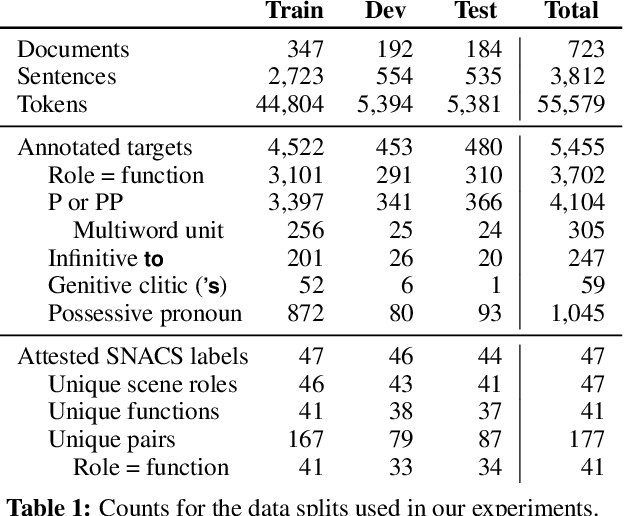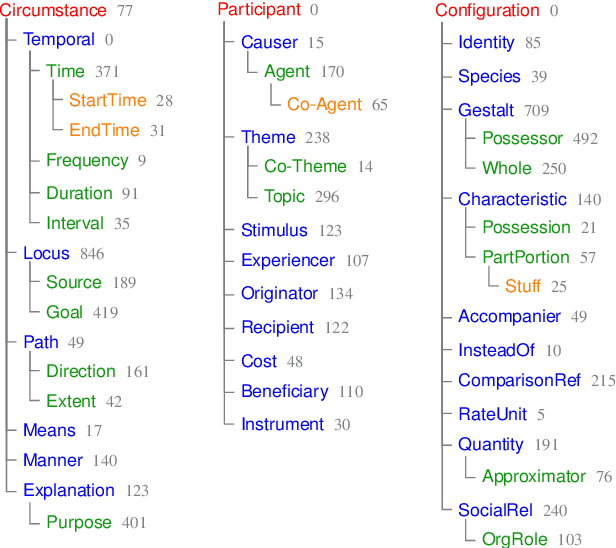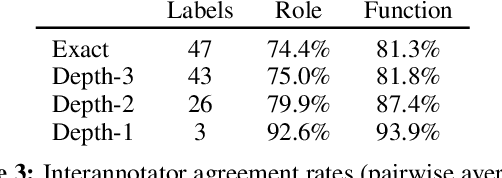Sarah R. Moeller
Adposition and Case Supersenses v2: Guidelines for English
Jul 02, 2018Abstract:This document offers a detailed linguistic description of SNACS (Semantic Network of Adposition and Case Supersenses; Schneider et al., 2018), an inventory of 50 semantic labels ("supersenses") that characterize the use of adpositions and case markers at a somewhat coarse level of granularity, as demonstrated in the STREUSLE 4.1 corpus (https://github.com/nert-gu/streusle/). Though the SNACS inventory aspires to be universal, this document is specific to English; documentation for other languages will be published separately. Version 2 is a revision of the supersense inventory proposed for English by Schneider et al. (2015, 2016) (henceforth "v1"), which in turn was based on previous schemes. The present inventory was developed after extensive review of the v1 corpus annotations for English, plus previously unanalyzed genitive case possessives (Blodgett and Schneider, 2018), as well as consideration of adposition and case phenomena in Hebrew, Hindi, Korean, and German. Hwang et al. (2017) present the theoretical underpinnings of the v2 scheme. Schneider et al. (2018) summarize the scheme, its application to English corpus data, and an automatic disambiguation task.
Comprehensive Supersense Disambiguation of English Prepositions and Possessives
May 13, 2018



Abstract:Semantic relations are often signaled with prepositional or possessive marking--but extreme polysemy bedevils their analysis and automatic interpretation. We introduce a new annotation scheme, corpus, and task for the disambiguation of prepositions and possessives in English. Unlike previous approaches, our annotations are comprehensive with respect to types and tokens of these markers; use broadly applicable supersense classes rather than fine-grained dictionary definitions; unite prepositions and possessives under the same class inventory; and distinguish between a marker's lexical contribution and the role it marks in the context of a predicate or scene. Strong interannotator agreement rates, as well as encouraging disambiguation results with established supervised methods, speak to the viability of the scheme and task.
 Add to Chrome
Add to Chrome Add to Firefox
Add to Firefox Add to Edge
Add to Edge